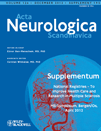The use of epidemiological multiple sclerosis registers in research: the Danish MS Registry
Abstract
Introduction
The claim of detection of several environmental risk factors for multiple sclerosis (MS), some of them new, makes the research of population-based MS registers for critical review or confirmation of alleged associations more relevant than ever before.
Aims
To present examples of the use and important contributions from the Danish MS Registry (DMSR) over decades.
Methods
The DMSR has through more than six decades registered virtually all patients with MS in Denmark, using multiple sources of notification and has been used for descriptive epidemiology, follow-up studies, studies of comorbidity and ‘historical prospective’ studies of proposed risk factors for MS.
Results
Based on research from DMSR, we have found that female incidence of multiple sclerosis in Denmark has increased considerably; that patients with MS loose their working ability and their spouses/partners at a much higher rate than the background population; that patients with MS have a considerable excess mortality which seem to have decreased over several centuries decades - not centuries, also before the era of disease modifying treatment; that fewer patients with MS than expected from the population get diagnosed with or die from cancer; that infectious mononucleosis increases the risk of MS; that head trauma and a number of occupational exposures, for example, nurses, utility workers, exposure to solvents do not carry an enhanced risk of MS.
Conclusion
The DMSR has, as an example of long-lasting population-based registers, proven to be an effective tool for studying MS epidemiology. In future, the need for this kind of registers will continue, as biology or immunology cannot stand alone.




